Field of Art and Design for Spatial Experience
Joshibi University of Art and Design
About the Field of Art and Design
for Spatial Experience
The Field of Art and Design for Spatial Experience is a pioneering area of study within the Department of Cross-Disciplinary Art and Design at Joshibi University of Art and Design, located at the Suginami Campus, starting in April 2024. Our unique interdisciplinary approach, which focuses on spatial expression and the relationship between “people and space,” Sets us apart. Students delve into a wide range of spatial experiences, from fundamental interactions between people and physical spaces to cyberspace. We also foster collaboration with other fields within the same department, including Media Art and Design, Art and Design for Healing, Art and Design for Fashion, and Art and Design for Creative Produce and Museum Studies. By integrating knowledge from these five fields, we aim to pioneer new areas and nurture individuals who can navigate and excel in an ever-evolving, diverse society.
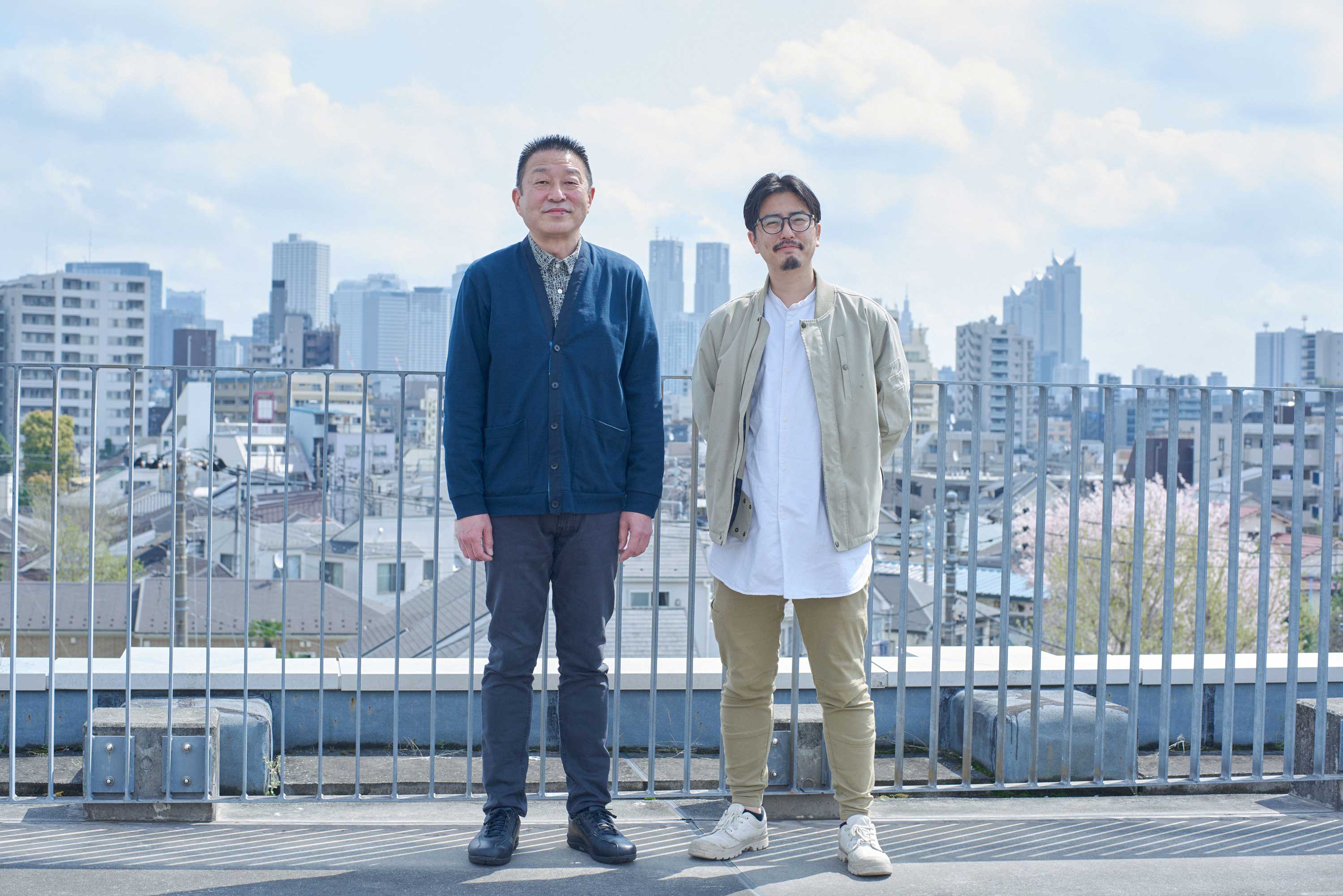
Interview
The Vision Behind
the Field of Art and Design
for Spatial Experience
What is the Field of Art and Design for Spatial Experience? The two faculty members leading this field share their educational vision, discussing its unique features and appeal.
Faculty InterviewWhat Can I Study?
Exploring the Field of Art and Design
for Spatial Experience
In the Field of Art and Design for Spatial Experience, students traverse both analog and digital spaces, as well as art and design. They explore various space-related genres, broadening their perspectives and developing their distinctive creative voices.
Areas of study include but are not limited to Spatial Planning, Adaptive Reuse, Community Development, Exhibition Planning, Exhibition Design, Stage Design, Contemporary Art, Installation Art, Entertainment Design, and Cyberspace. There are many other areas students can explore and learn about.
The Three Core Concepts of Learning
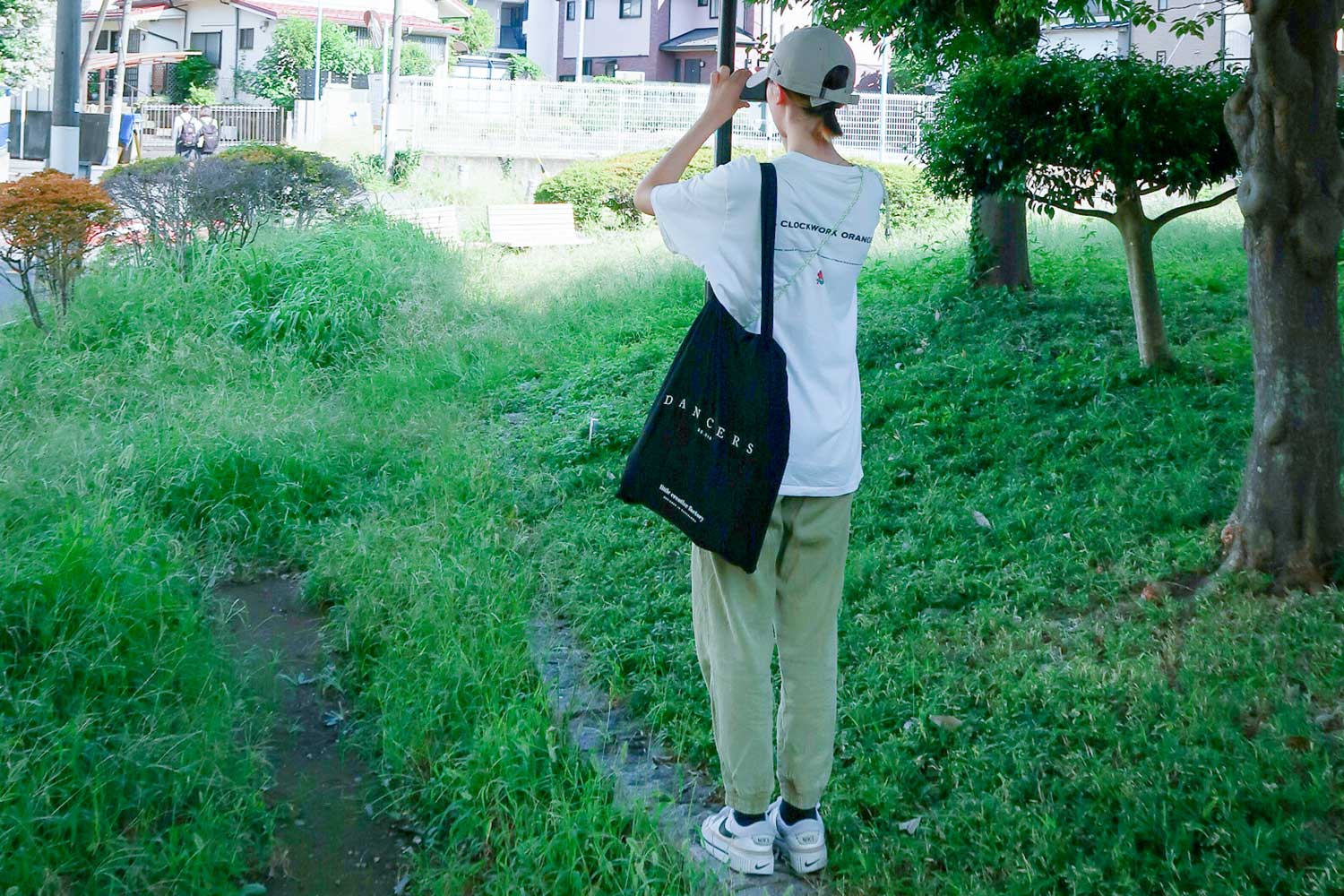
01 Primitive Space
What is “space” at its core? From sunlit clearings in the forest to the hidden corners behind curtains, we explore the beginnings of space.
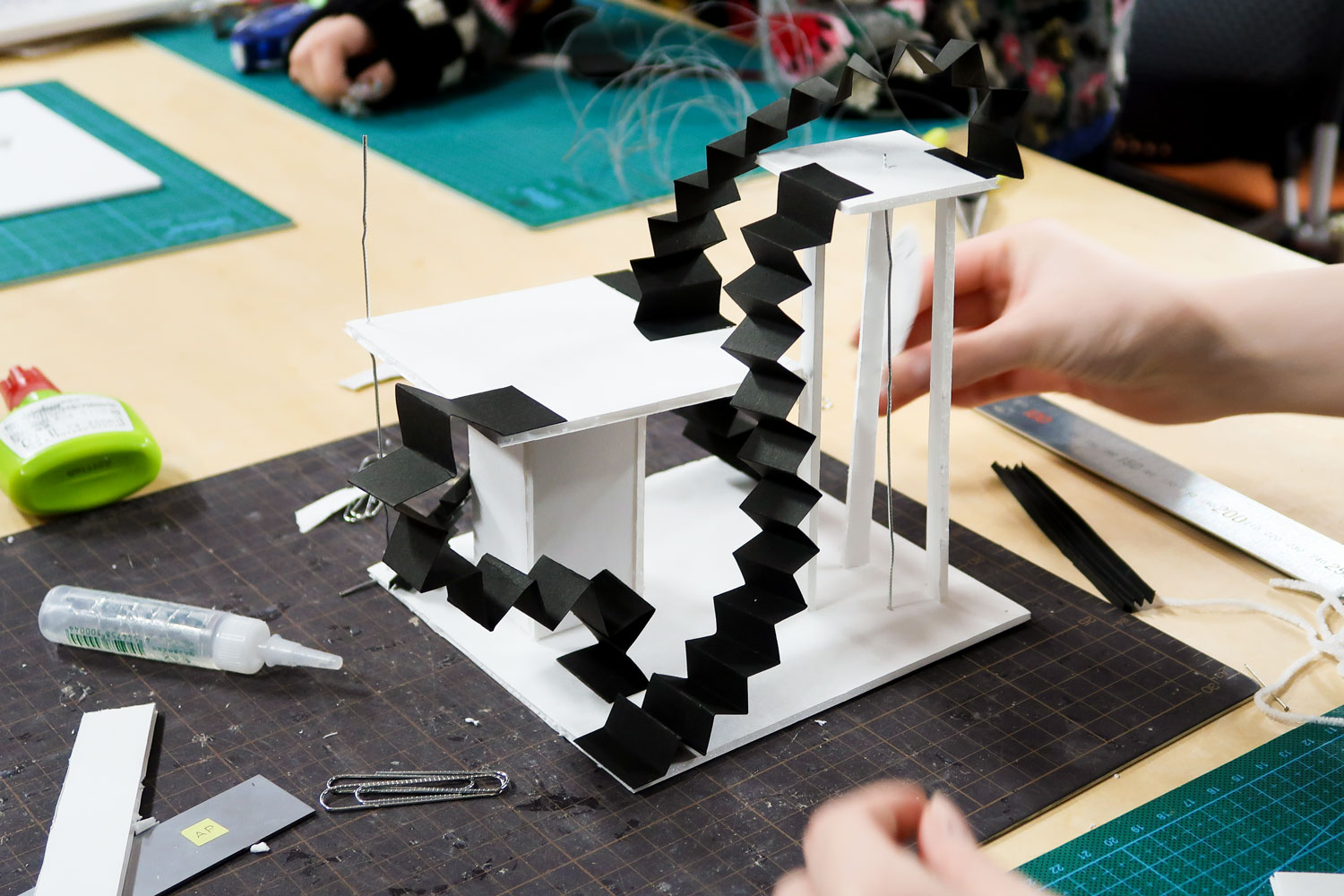
02 Temporary Space
Does a space feel the same when objects are arranged vertically versus horizontally? We examine the subtle expressions of space found in everyday settings.
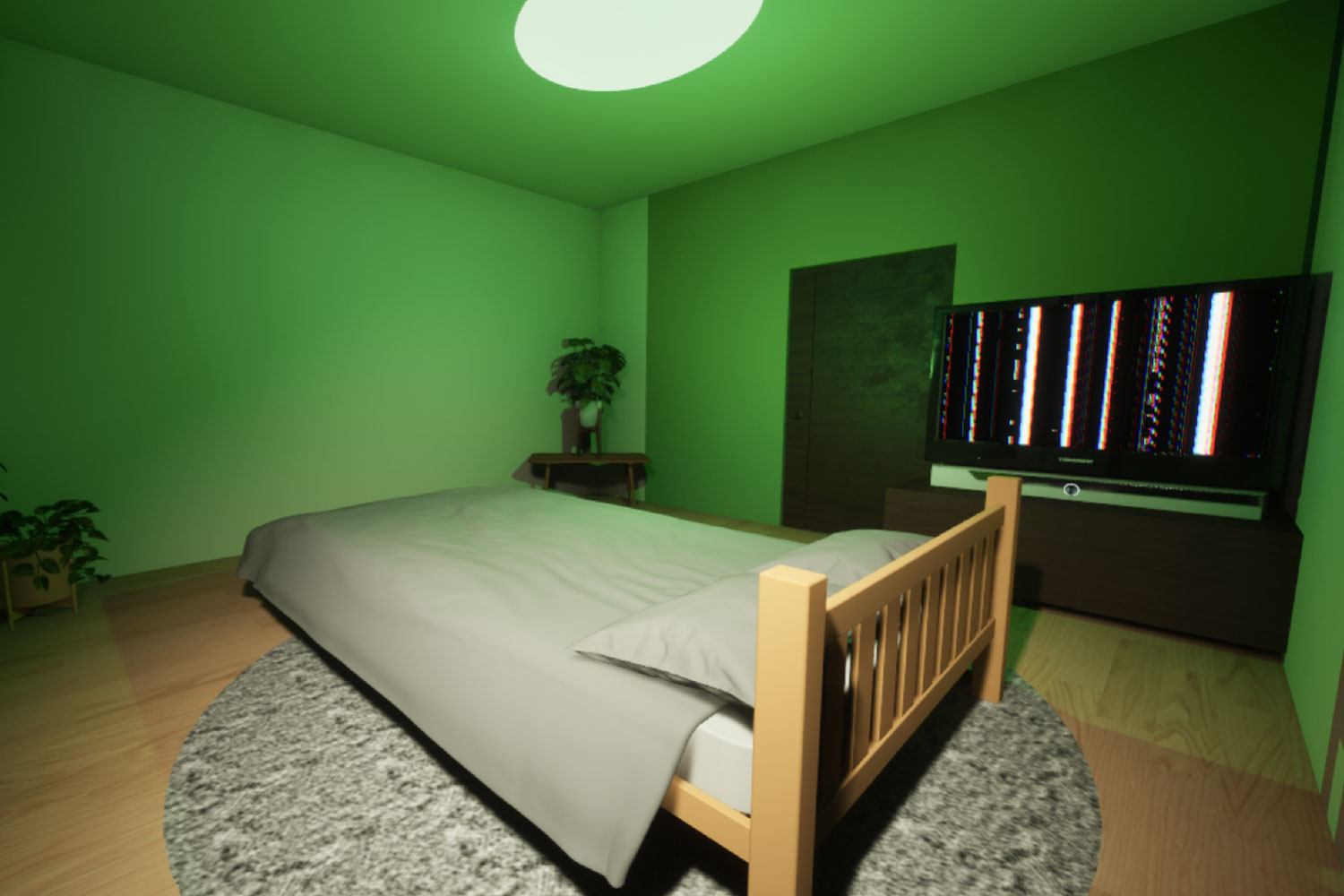
03 Immersive Space
Where is the boundary between the ordinary and the extraordinary? We delve into the potential of immersive spaces that stimulate perception and add more color to everyday life.
Available Certifications
Type 1 Teacher's License (Art) for Junior High School / High School
Students can obtain this license by completing the required “Teacher Certification Program credits.”
Curator Qualification
Students can obtain this qualification by completing the required “Curator Training Program credits.”
Career Paths After Graduation
Faculty

GOTO Kosuke Professor
After graduating from the Department of Industrial Design, Faculty of Art and Design at Kyushu Institute of Design, Professor GOTO joined GK Design Group Inc., where he worked on product design, signage, and interior design. At the Department of Socio-Cultural Environment Studies under the Graduate School of Frontier Sciences at the University of Tokyo, he later pursued research on the physical environment and human behavior outdoors. Some of his significant projects during his tenure include the design of the furniture and signage at the Marugame Genichiro-Inokuma Museum of Contemporary Art and Marugame City Central Library, the project for developing a new design of the postal box, and the project for improved pedestrian signage in Sendai City.

NISHIDA Hidemi Associate Professor
NISHIDA earned his Master's degree from the Faculty of Fine Art at the Bergen Academy of Art and Design (now the Faculty of Fine Art, Music and Design at the University of Bergen) in Norway. He has exhibited his works at various international venues, including the Gwangju Biennale (2014, Gwangju, South Korea) and the Sapporo International Art Festival (2014, Sapporo). After spending time in London and Taiwan as an artist, he stayed in Moscow from 2018 to 2019 as a fellow of the Pola Art Foundation's Overseas Research Program. NISHIDA is known for his environmental installations that create dialogues between landscapes and people. Additionally, he is involved in stage design, spatial design, installation art, and performance art.
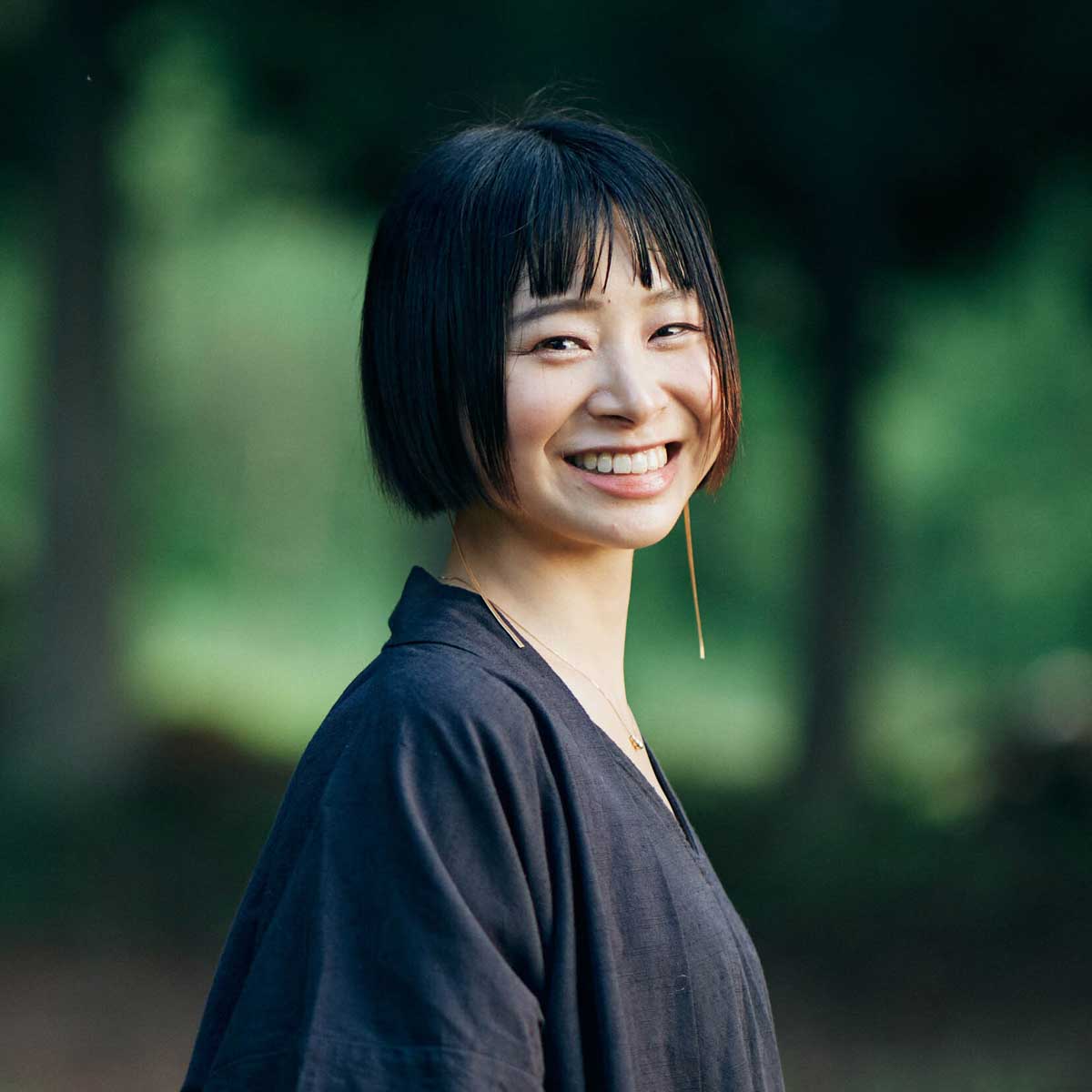
NISHIO Kana Assistant Professor
Graduated with a major in Fine Arts from Tokyo Zokei University. After completing her graduate studies at the Tokyo University of the Arts, she has been active as an art coordinator and contemporary artist. NISHIO explores the relationships between places, objects, and people, focusing on their history, origins, transformations, and shifts in perception through her artwork and curation. Her projects include creating installations that combine video and objects, exploring “landscapes that exist only in memory,” curating exhibitions on “The art of leaving things behind” and establishing an art museum in a farming village to archive local life and culture.

SUZUKI Moeka, Ph.D. Assistant Professor
After earning her Bachelor's and Master's degrees in the Field of Art Produce and Museum Studies at Joshibi University of Art and Design, SUZUKI completed her Doctorate in Fine Arts at the Graduate School of Fine Arts, Tokyo University of the Arts. She co-founded and oversees DAÉN, a research and publishing project dedicated to documenting and critically examining contemporary art in Japan, with a focus on fostering critical discourse and building archival resources. Her research focuses on Japanese contemporary art of the 1990s, analyzing the artistic trends of the time while engaging in exhibition curation and critical writing. Her major curatorial projects include Inherited Esthetics (2023, MITSUKOSHI CONTEMPORARY GALLERY) and Research on Röntgen Kunstinstitut (2019, Radium von Roentgenwerke AG).

YOSHIDA MikuuAdjunct Research Associate
YOSHIDA obtained her master's degree from the Joshibi University of Art and Design in the field of Oil Painting Research. In addition to composing songs inspired by everyday life at her part-time job at a convenience store and the mysterious customers she encounters there, she also produces works that explore the concept of the creator through the enlargement of marionettes she originally made as a child with her father, a ball jointed doll artist. In recent years, she has focused on issues of identity, creating artworks that address the social backgrounds of women dealing with motifs of her mother and grandmother.
Admission
Capacity / Schedule
| Admission Capacity | 17 students | ||||||
|---|---|---|---|---|---|---|---|
| Admission Methods |
|
Please note that admission methods may vary each year. For further details on admission methods and schedules, please refer to the student guidelines on the university's website.
Admission InformationRequest Materials
Educational Goals
The Field of Art and Design for Spatial Experience aims to develop space creators and producers who can conceptualize space through new frameworks, engage with historical contexts and human essence, and expand spatial creativity from diverse perspectives to envision a more vibrant society.
Curriculum Policy
To achieve the educational goals, the following curriculum is implemented:
Knowledge and Understanding
(General Education and Basic Expertise)
Subjects are designed to teach the foundational concepts and skills necessary for working with space, including ergonomics, technical drawing, and modeling. Students will also study the three core spatial concepts emphasized by the Field of Art and Design for Spatial Experience: Primitive Space, Temporary Space, and Immersive Space.
Interest, Motivation, and Attitude
(Initiative, Creativity, Teamwork, Resilience)
The curriculum includes interdisciplinary projects and seminar-style classes designed to foster proactive engagement, collaboration with diverse individuals, and a multifaceted understanding of spatial concepts. These subjects aim to deepen students' grasp of spatial concepts, encourage innovative work, and nurture their drive for self-fulfillment. Additionally, they develop students' ability to envision the future and continue learning independently.
Thinking and Criticality
(Comprehensive Critical Thinking and Creativity)
Subjects are designed to develop the ability to think critically and generate ideas about spatial creativity from various perspectives by examining space from its origins to its future. These subjects foster the skills to conceptualize and create innovative spatial designs.
Skills and Expression
(Creativity and Implementation)
Subjects are designed to cultivate unique, expressive abilities and techniques by conducting in-depth research in specialized fields while exploring interdisciplinary areas.
Access
Field of Art and Design for Spatial Experience,
Department of Cross-Disciplinary Art and Design,
Joshibi University of Art and Design
Suginami Campus, Joshibi University of Art and Design, 1-49-8 Wada, Suginami-ku, Tokyo
8-minute walk from Higashi-Koenji Station on the Tokyo Metro Marunouchi Line (15 minutes from Shinjuku on the Tokyo Metro Marunouchi Line).
Inquiries
Please visit the official website of
Joshibi University of Art and Design
for admission details and to request materials.